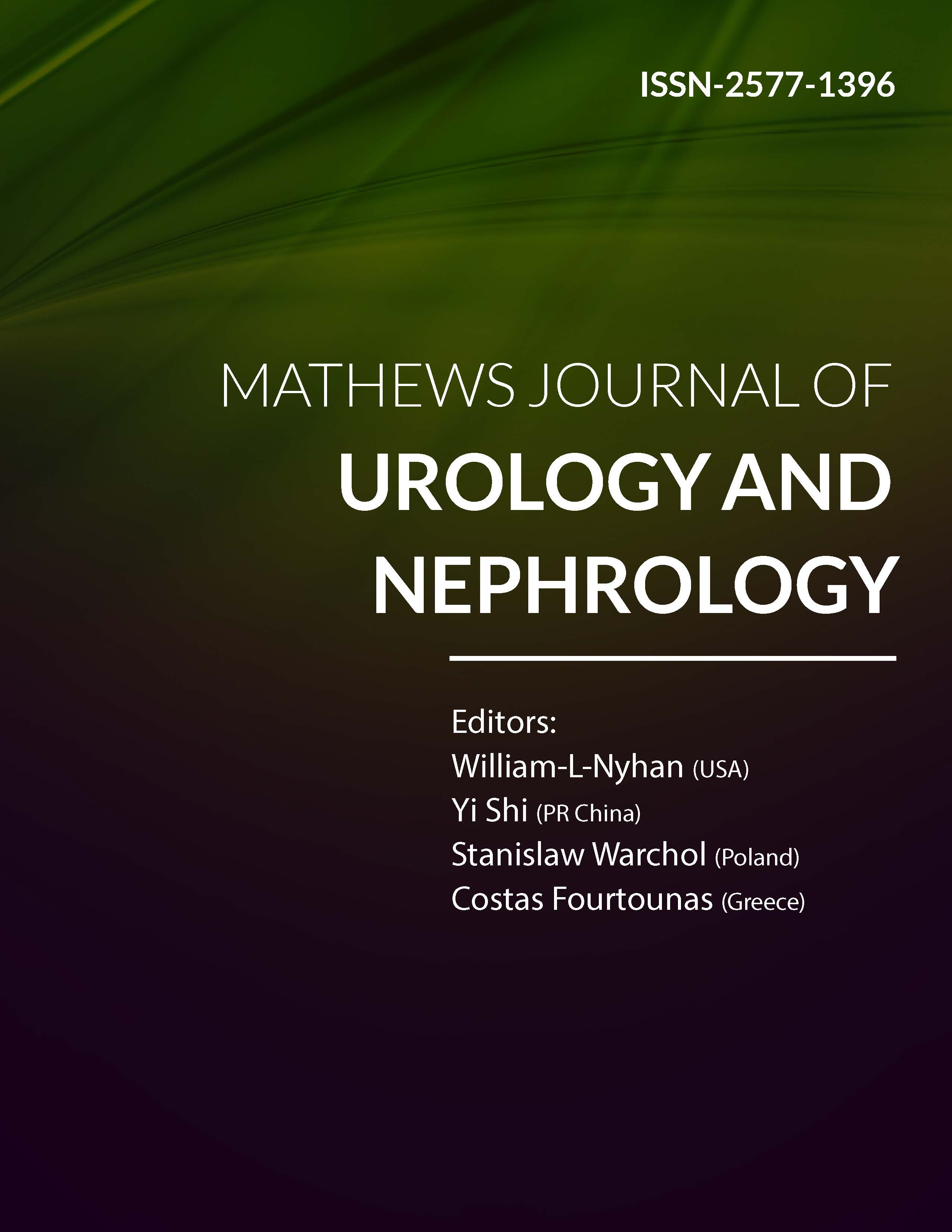
Information Links
Current Issue Volume 6, Issue 2 - 2024
Urological Emergencies: An In-Depth Analysis of Incidence, Etiologies, and Therapeutic Approaches
Yassine Larrache, Mahmoud Alafifi*, Saleh Nedjim, Amine Moataz, Mohamed Dakir, Adil Debbagh, Rachid Aboutaieb
Department of Urology, University Hospital Center IbnRochd Casablanca and Faculty of Medicine and Pharmacy of Casablanca, Morocco
*Corresponding author: Dr. Mahmoud Alafifi, Department of Urology, University Hospital Center IbnRochd Casablanca and Faculty of Medicine and Pharmacy of Casablanca, 19 Tarik ibnou quartiers des hôpitaux, Morocco, Phone: +212700148612, E-mail: [email protected]
Received Date: April 15, 2024
Published Date: May 22, 2024
Citation: Larrache Y, et al. (2024). Urological Emergencies: An In-Depth Analysis of Incidence, Etiologies, and Therapeutic Approaches. Mathews J Urol Nephrol. 6(2):22.
Copyrights: Larrache Y, et al. © (2024).
ABSTRACT
This study aimed to delineate the urological profile of patients managed at Casablanca University Hospital. A retrospective review of 456 cases overseen by the urology department's on-call team at CHU Casablanca throughout one year (January 2023-December 2023) was conducted. Patients, with an average age of 57.8 years, predominantly comprised males. Acute urinary retention (AUR) represented 38.32% of emergencies, with febrile low back pain (19.08%) and urogenital trauma (12.07%) following. Among urological emergencies, obstructive pyelonephritis (51.9%) was prevalent. Benign prostatic hyperplasia (67.56%) was the primary AUR cause, while renal trauma (40%) was prominent in urogenital trauma cases. Bladder tumors (48.58%) constituted most urological hematuria instances. Key therapeutic interventions included evacuative urethral catheterization (41.66%), nephrostomy (13.88%), and JJ stent insertion (11.58%). Our study highlights acute urinary retention as the predominant urological emergency, emphasizing the necessity for proactive management strategies, followed by febrile low back pain and urogenital trauma.
Keywords: Emergency, Urology, Profile, University Hospital.